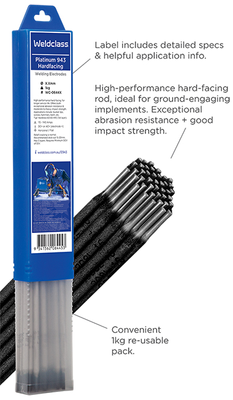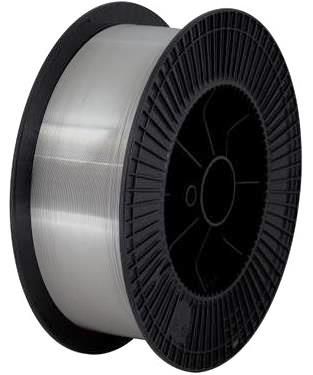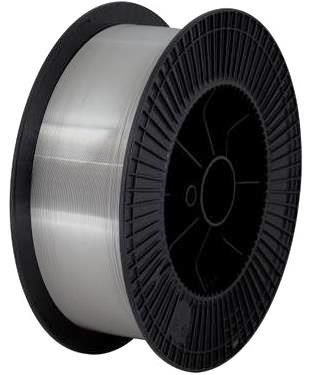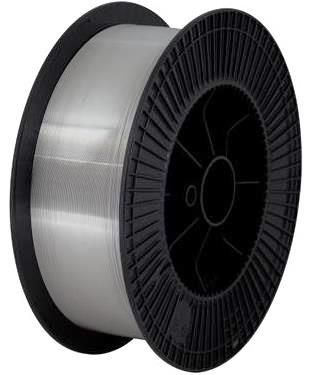Hardfacing Selection Guide | Weldclass Australia
Weldclass offers a range of tried-and-tested hardfacing consumables, including hardfacing MIG wire and hardfacing welding rods / electrodes.
Hardfacing Costs and Downtime
Time is money and often the biggest cost-component of the hardfacing process is; a) the time and labour involved in applying hardfacing, and b) the down-time or loss of production while equipment is out of service . This labour/downtime cost is often much higher than the cost of the hardfacing product (wire or electrodes) itself.
This is why Weldclass has worked with leading manufacturers and metallurgical experts globally to develop hardfacing wires and electrodes that suit Australian conditions and offer superior wear life, to increase equipment service life, reduce down-time costs, and increase up-time.
To achieve this, here's a guide to help you select the best product for your application.
Hardfacing Selection Guide
Use this handy chart to find the most suitable Weldclass hardfacing product for your application.
| Product Click for more info → |
Hardfacing 'MIG' Wires  |
Hardfacing Stick Electrodes |
|||
|
Key Features |
• Solid wire, use with gas |
• Very high abrasion resistance • Up to 4x longer wear life vs basic HF wires • Low-medium impact resistance • Gasless wire • Typical hardness 59-61 HRc |
• Extreme abrasion resistance |
• Good abrasion resistance with moderate-to-high impact strength • Suitable for parts subject to fatigue or flexing in service • Typical hardness 53-56 HRc |
• Exceptional abrasion resistance |
|
Sizes Available |
1.2mm 4.5kg |
1.2mm 4.5kg 1.2mm 15kg Requires 140-200A |
1.6mm 12.5kg Requires 160-240A |
3.2mm 1kg 4.0mm 1kg |
3.2mm 1kg |
|
✅✅ Best option/s for max wear life ✅ Good option ⚫ Can be used, but not the best solution ❌ Not Recommended |
|||||
|
Product |
PLATINUM SD-980 Wire |
PLATINUM CX-1800 Wire |
PLATINUM CX-2150 Wire |
PROMAX 700 Electrodes |
PLATINUM 943 Electrodes |
|
Abrasive wear with low-to-moderate impact, eg:
|
⚫ | ✅✅ | ✅✅ | ⚫ | ✅✅ |
|
Abrasive wear with heavy impact (shocks & blows), eg:
|
✅ | ❌ | ✅✅ | ✅ | ✅✅ |
|
Where exact nature of wear is not known in advance, eg:
|
⚫ | ⚫ | ✅✅ | ⚫ | ✅✅ |
|
Metal-To-Metal Wear, eg:
_______________________________________ |
✅ | ❌ | ❌ | ❌ | ❌ |
All Weldclass Hardfacing Products
See below for the full range of Weldclass hardfacing consumables;
-
700 series hardfacing welding rods for general hard-facing of ground-engaging implements and similar applications. Good abrasion resistance with moderate-to-high impact strength, typical hardness 53-56 HRC. A tough weld deposit also makes this electrode suitable for parts subject to fatigue or flexing in service. Suitable for a wide range of applications including the surfacing of post hole augers, agricultural points, shares and tynes, grader and cultivator blades, etc. Supplied in 1kg re-usable convenience pack to keep electrodes in good condition. For higher abrasion resistance and longer wear life, we recommend Platinum 943 series electrodes.
Stick Electrode Selection Chart Hardfacing Selection Guide -
High-performance hard-facing welding rod, ideal for ground-engaging equipment. Platinum 943 deposits extremely hard, abrasion resistant CrNb carbides, offering long wear life with both exceptional abrasion resistance and impact strength. Ideal for hard surfacing applications where resistance to high or extreme abrasion (in particular sliding abrasion) and moderate to heavy impact are required.
Due to the nodular shape of the complex carbides, Platinum 943 deposits are capable of withstanding heavier impact levels than standard chromium-carbide electrodes. Typical applications include; buckets, lips, screws, hammers, teeth, crushing equipment, etc. Typical hardness 60-65 HRC (1st layer). Supplied in a 1kg re-usable convenience pack to keep electrodes in good condition.
Stick Electrode Selection Chart Hardfacing Selection Guide -
Long-Life hardfacing 'MIG' wire for ground-engaging equipment. Very high resistance to abrasion with up to 3-4 times better wear life vs basic hardfacing wires*... thanks to special carbide additives not found in other wires.
Recommended for metal-to-earth applications where wear is mostly caused by abrasion, with low-to-medium impact; points, tynes, buckets, teeth, screws, augers, grousers, etc.
Gasless wire for easy application. Available in 1.2mm in 15kg or 4.5kg spools. Requires minimum 140 amps, suitable for use with 200A-250A MIG welders.
Hardfacing Selection Guide -
SD-980 hard-facing MIG welding wire is a versatile and easy-to-use "all-rounder". Being a solid wire, PLATINUM SD-980 is easy to apply and is all-positional. Ideal for applications where abrasion resistance is required, and especially when accompanied by shocks and blows. The weld can handle abrasion, moderate-to-high impact and metal-to-metal wear. Commonly used on excavator buckets and teeth, screws and augers, tracks, crushing jaws/wheels, etc. Available in 1.2mm in 15kg or 4.5kg spools. Requires minimum 120 amps. Use with Ar+CO2 mixed gas.
Hardfacing Selection Guide -
Extreme performance hardfacing 'MIG' wire, providing a unique combination of both extreme abrasion resistance AND high impact resistance. Up to 6-7 times better wear life vs basic hardfacing wires*... thanks to special carbide additives not found in other wires.
Suitable for a very wide range of applications such as; components subject to abrasion together with high impact stress, where down-time cost is high and longer service life is critical for reducing costs, and where the exact nature of wear is not known in advance and all-round abrasion + impact protection is needed.
Typical applications include: metal-to-earth, ground-engaging equipment, crushing, dredging, mining equipment, grizzly bars, and much more.
Gasless wire for easy application. Available in 1.6mm. Requires minimum 160 amps, suitable for use with MIG welders around 200A-250A & above.
Hardfacing Selection Guide
What is hardfacing ?
In the context of welding, hardfacing is applying a special weld metal to equipment or components, to create a hard surface that will provide better wear resistance than the base metal, thus extending the service life of the equipment.







